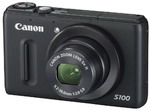Thursday, February 22, 2007
Building Your Own Media Center PC
Posted by Jason Dunn in "THOUGHT" @ 08:00 AM
This article is a high-level step by step procedure designed to walk you through the decisions required to build your own Windows Media Center Edition 2005 computer – a project I recently completed. It also includes short reviews of the particular products I chose for this project, and why I chose them. Because this is a high-level overview, I won’t be covering any of the steps in great detail. Instead, this article is focused on the decision making process behind choosing the best components for the Media Center Edition 2005 (hereafter referred to as MCE 2005), putting them all together, and what I learned from the process. If you’re interested in building your own MCE, this article is for you.
If you’re interested in buying one pre-built, there are plenty to chose from. Let's get started!
Step 1: Decide What Kind of MCE 2005 You Want to Build
Where will your MCE PC be? Attached directly to your TV, or in another room? Will it be used as a computer, or strictly as a personal video recorder (PVR) attached to your TV? This decision greatly impacts the overall design of the MCE you’ll be building. In my case, I had several goals in mind.
My MCE would serve as a central repository of all my music, pictures, and video files. It would also have a low-volume FTP and Web server on it, and contain backups of all my data. These were all tasks performed by another computer that I wanted to retire – added to that, this computer would record and play back TV shows both locally and over my network to the TV upstairs. That’s a lot to ask from a computer, so the bar was raised fairly high regarding what type of computer I needed to build. I needed something with a lot of storage, sufficient RAM for multitasking, and a CPU powerful enough to handle it all without complaint.
Step 2: Picking the Case and Motherboard
Because my particular scenario was aimed at having a computer in my work area, and not beside my TV, I didn't need a home theatre-style case. I opted to use a Shuttle, the SN95G5. This was an AMD-based system with an nForce3 chipset, meaning it had onboard audio, Firewire, and all the goodies I needed except for onboard video (which is curious given we're talking about NVIDIA). In fact, that's one thing I would have preferred to see – an onboard GeForce GPU solution with DVI output. I'm a big fan of onboard video if the computer in question isn't going to be used for gaming, because it reduces the overall cost and complexity of the project.
2007 Update: I'd still pick a Shuttle today. The SN95G5, in retrospect, turned out to be fairly loud when compared to other Shuttle models I had. A good solution would be one of their models that has an external brick power supply - the power supply fan tends to be the loudest fan in a Shuttle.

Figure 1: The SN95G5 is a slick-looking machine. It boasts a high-gloss black plastic front, black aluminum case, and integrated buttons. The high-gloss finish does make it a magnet for fingerprints though, so keep a cloth on hand to polish it up now and then. Below the optical drive panel there's another panel that opens with a press, where you'd put a floppy drive or memory card reader if you weren't adding a second hard drive. Near the bottom of the front face, there's another access panel that opens with a finger press, behind which there's two USB 2.0 ports, a Firewire port, a headphone jack, and a microphone jack.
The visual design of the SN95G5 is excellent – it's the first Shuttle XPC unit I've owned that has used the stealth drive bay doors, giving it a uniform look. Doors covering the optical drive aren't anything new, but most are vertically hinged, requiring the user to open the door by hand before being able to access the drive. The SN95G5's door is horizontally hinged and spring-loaded; it's light enough to come down automatically when the optical drive opens, and is pulled shut when the drive closes. While the idea is great in theory, it gave me some grief – I installed the optical drive, adjusted the contact pad (see Figure 2), and screwed the drive in. I then powered up the system and pressed the drive door button – and nothing happened.

Figure 2: The small white pad is supposed to make contact with the open/close button on the optical drive.
Over the next 30 minutes I adjusted the pad and optical drive position a dozen different ways trying to get a solid connection, all to no avail. Ultimately by the end of the project, I had to settle for opening it via software – I had to right-click on the optical drive in My Computer and select Eject to get it open. Understandably, this was extremely frustrating. I did it this way for several months, cursing it all the while, until one day I opened the front optical by prying my fingers in and pushed the optical drive backwards without unscrewing it first – it didn't move by more than a mm or two, but that was enough to allow the button to magically start working, and it's worked ever since. Ultimately I think this is a flawed design approach from Shuttle and they need to re-think the entire way they approach this problem because it obviously doesn't work for everyone.

Figure 3: The rear of the SN95G5 has a serial port (why bother?), SPDIF in and out, the usual keyboard and mouse inputs, on-board 100 megabit Ethernet, one six pin Firewire port, analog audio line in, and several analog audio outputs, including a sub-woofer channel.
The SN95G5 boasts an on-board RAID controller, which for the purposes of this project isn't very useful – but I couldn't help but see what kind of screaming performance I could eke out of it. I happened to have two Western Digital 10,000 RPM Raptor drives on hand, so I put them into the SN95G5 and did some tests. Having RAID enabled slows down the boot time by six seconds, but the performance gains are worth it: using SiSoft Sandra 2005 I benchmarked the Raptor drives in a RAID 0 configuration at a blazing 99 MB/s. A single Raptor hit 55 MB/s, which is still impressive, but drives this fast truly shine when unleashed via RAID. Because capacity trumps speed when building an MCE computer, I ended up using different drives, and not in a RAID array, when building the machine.
In terms of expandability, the SN95G5 is better than most small form-factor machines; it has one AGP slot, and one PCI slot. The AMD CPU slides into a 939 socket, and presumably with a BIOS upgrade I'll be able to put a dual-core CPU in there at some point [fast-forward to 2006: I upgraded later on and put in a dual core 4800+ CPU in there]. Having an AGP and PCI slot gives me the bare minimum for an MCE machine: a graphics card and a TV tuner.












